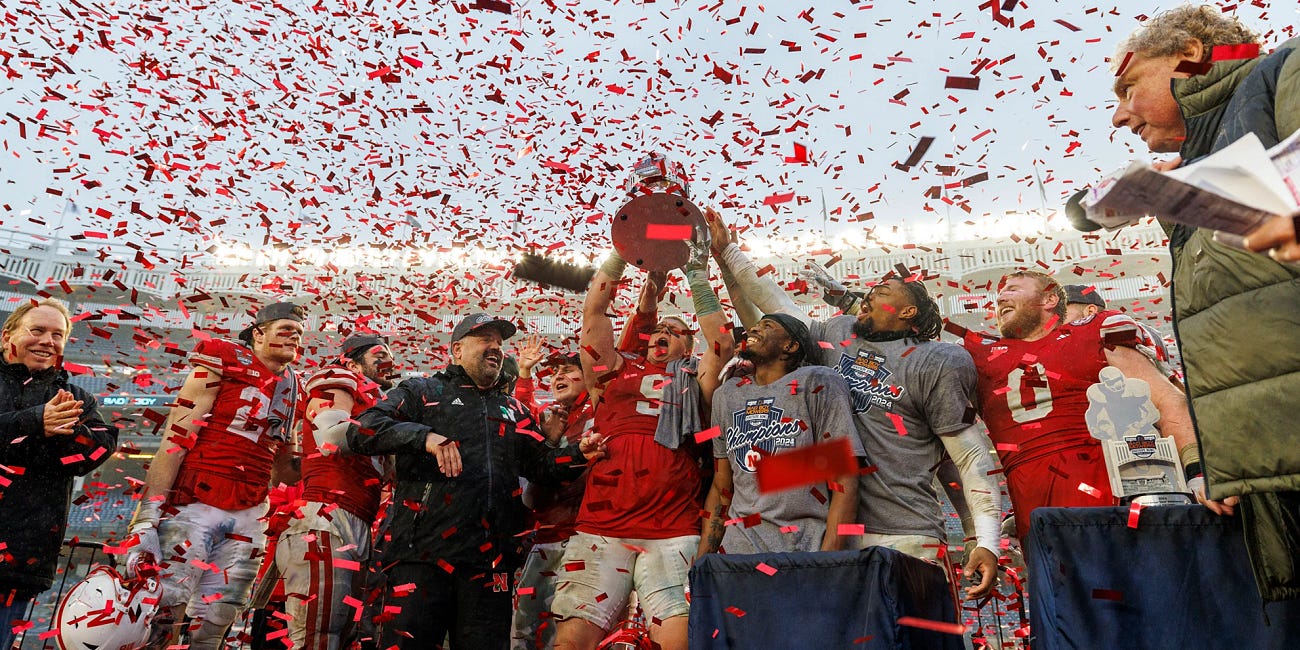Double diamond
Nebraska softball ripped through its Regional to advance in NCAA Tournament play while baseball earned the 8-seed this week in Omaha.
Well, Nebraska made that look easy.
Husker softball ripped through the Baton Rouge Regional of the NCAA Tournament, beating Connecticut and Southeastern Louisiana, the latter twice, by a combined tally of 32-4. None of games went longer than six innings thanks to the run rule. Host LSU, the 10th overall seed in the Tournament, never even got to face Nebraska, losing twice to Southeastern Louisiana.
Jordy Bahl hit her 20th and 21st home runs of the season Friday during the 10-2 win over UConn, becoming just the fourth player in NCAA history to hit 20 homers while also winning 20 games in the circle. Bahl homered again Saturday, picking up her 24th pitching win of the year in a 14-1 victory over the Lions. She moved to 25-6 on the season Sunday with an 8-0 win over Southeastern Louisiana, where, I swear I’m not making these things up, she homered again to push her season total to 23, a new program record.1
If you’re scoring at home, Bahl had five at bats in the Regional, hitting four home runs, driving in seven and scoring eight. She also pitched 12 innings over three games, allowing one hit and striking out 16.
The Huskers now head to Knoxville for the Super Regional round and a best-of-three series against Tennessee. The 7th-seeded Volunteers went 3-0 in their own Regional, beating Ohio State twice.
Nebraska beat Tennessee 7-1 in Clearwater, Florida, in the first game of the season. Bahl outdueled Tennessee ace Karlyn Pickens, allowing one run on five hits over 7 innings to Pickens’ five runs on five hits over 5 innings. (Pickens did strike out 11 of the 20 batters she faced, however.)
This is the Huskers’ third Super Regional trip in program history, and first since 2014. The round of 16 runs May 22–25, with game times yet to be announced Sunday night.
Everybody into the pool
Over on the other diamond, Husker baseball took two of three at Purdue to earn the 8-seed in this week’s Big Ten baseball tournament in Omaha. Now that the conference is coast to coast, the tournament features a new format this year—pool play.
Instead of the traditional, double-elimination bracket, the Big Ten broke the 12-team field into four, three-team poolsbased on conference standings. That produced:
Pool A: Oregon (1), Nebraska (8), Michigan State (12)
Pool B: UCLA (2), Michigan (7), Illinois (11)
Pool C: Iowa (3), Indiana (6), Rutgers (10)
Pool D: USC (4), Washington (5), Penn State (9)
Each team plays the other two in its pool with Nebraska facing Michigan State at 6 p.m. CT Tuesday. The Huskers and Ducks play the 6 p.m. game on Friday.
The new format leads to a couple of natural questions. First, what happens if a pool finishes in a three-way tie at 1-1? The highest seed advances from the pool, which is a helluva trump card to hold.
Second, doesn’t this set everyone up for some games with nothing on the line? Yep. This probably doesn’t need to be explained, but just in case: Say Nebraska loses to Michigan State Tuesday and then the Spartans beat Oregon Thursday night. Neither Husker nor Duck can advance from Pool A. If those same teams are playing for a spot in the final four on a Friday night in Omaha, the ballpark is electric.
If they’re not, it could be one of the lowest-stakes games either team plays all year. Strange way to do it, but it’s not like any of these conferences ever expanded with an eye towards the postseason.
Well, except for that time the SEC added South Carolina and Arkansas in 1992 so it could hold a conference championship game in football, which made every school there more money, so then every school was interested in their own conference having one. There were many reasons the Big Eight absorbed four Southwest Conference teams in 1996. Getting to 12 teams, triggering divisions and a conference title game, was one reason it was exactly four.2
Anyway, all of the Big Ten Tournament games will be carried on BTN. I’ve jabbed at the format enough that I should add I’m probably more open to it than the average person. I happen to like tournaments that begin with pool play.
Why doesn't college football just adopt the Champions League model?
The UEFA Champions League (UCL) only includes anywhere from 33-to-47% champions in any given year. The name is technically a misnomer, but it’s an elegant name and comes with an earwormy anthem, so overall it’s a net positive. The UCL, if you’re not deep into soccer, is Europe’s biggest club competition. It includes the champi…
Ali Viola held the previous recording, hitting 22 home runs in 1998.
A Big 16 with a Big Eight division and an SWC division—minus Rice, which I hate to do, but one team has to go—would’ve been a killer conference. Visionary, even, in 1996. Alas…




